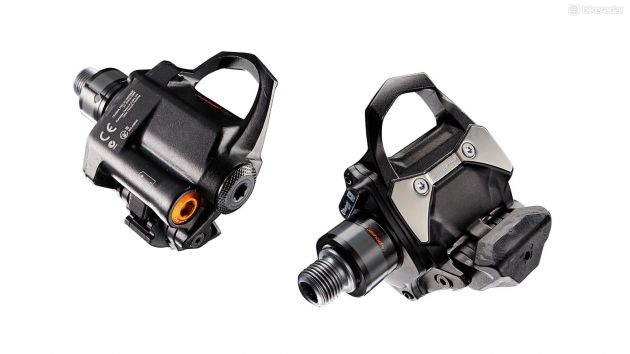You can trust Cyclingnews

This article originally appeared on BikeRadar
PowerTap's P1 pedals came to market with one big trump card – transferability. With no pods and no torque requirement the P1s are as easy to fit as any other pedals, so are easy to swap between bikes. Unlike Garmin's V2, the P1s also fit every crank.
(Update 15/1/17: Powertap tells us that it has updated both the firmware and the hardware of these P1 pedals to address all the issues mentioned below – watch out for our new review soon.)
- Highs: Straightforward to transfer, value
- Lows: Weight, cornering clearance, some sketchy data, no left-only option
- Buy if: Simplicity is your number one priority and you're willing to overlook occasional bad data
There are some downsides, though and the first is immediately apparent; the P1s are very chunky. At 429g for the pair, they add 200g compared with most good pedals and they reduced ground clearance too.
While that's only of concern to racers, the fact that the edge of the battery cover is the first thing to hit should worry anyone. The first cornering scuff nearly ruined the pedal body and we were very careful after that.
Pairing and initial set up is very easy, and they wake up when you spin them or start riding. As pedals, they're fine. The supplied Keo-style cleats give very loose float, with real Look Keo cleats they feel like other Look pedals with clean engagement and release. Their weight means they always hang at the right angle to locate the cleat.
The AAA batteries lasted just 80-100 hours and we didn't get a 'low battery' warning on our Garmin — you have to check for the green flashing light on the pedal to go red. Soon after that they won't wake up, so keep spares handy and check or swap them before that big event you've been targeting.
Generally the P1s tracked very well with other meters and performed well. They handle both low cadence work and sprints without deviating. However, we had more bad data from the P1s than any other meter including half a dozen spikes of over 30,000 watts and repeated over-reading by 8-10 percent when above 300W during intervals and TTs.
The latter is more troubling because it was only when using multiple meters that the error was apparent and at under 300W they tracked properly. PowerTap says both errors were a firmware glitch and that an update would fix it. We've since tried the latest firmware and the P1s continued to over-read, albeit by a slightly reduced margin of 5 percent. Such errors shouldn't have reached production — consistency is everything.
If you'd like to know more about how the P1 stacks up against the competition, check out our nine-way power meter test video.
Specification
Name: P1
Built by: PowerTap
Price: £999.00 / US$1,199.00 / AU$$1,799.00
SetUp: Pedals
Weight: 429
Left/Right Measurement: Yes
DIY Battery Swap: Yes
Battery: AAA
Battery Life: 80-100 hours